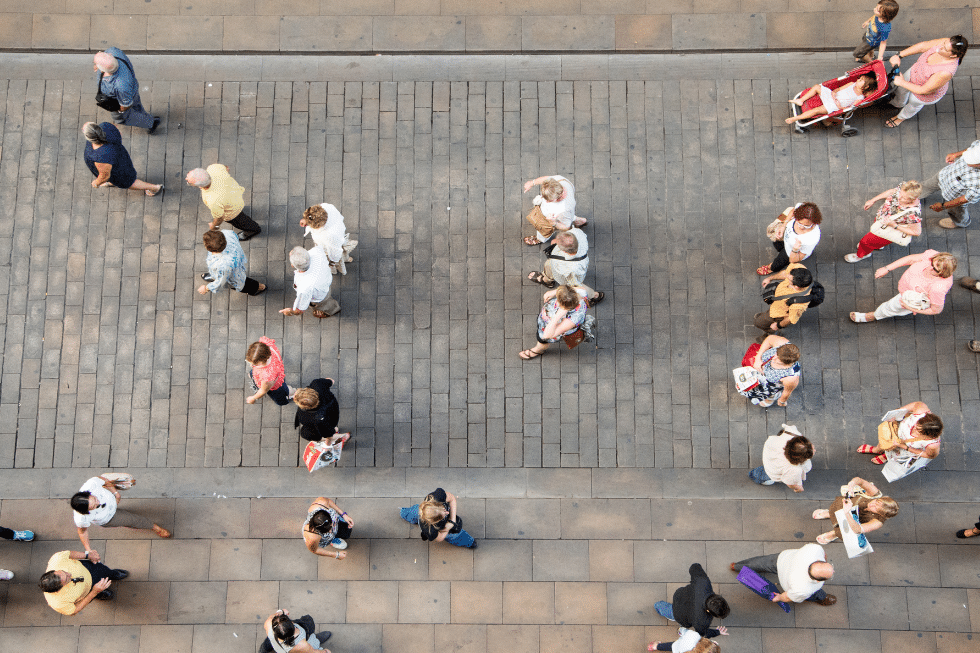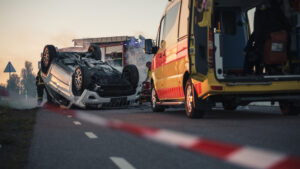The ongoing conflict between Florida pedestrians and motorists seems to have taken a deadly turn with 444 walkers killed in the Sunshine State in 2021. According to a recently released report from the Governors Highway Safety Association, the number of pedestrian deaths in 2021 was up 17% from the previous year. However, the number of Florida pedestrian deaths in 2021 represents an increase of almost 31%. Equally troubling is the fact that during the first six months of 2021, Florida and two other states accounted for 37% of all pedestrian fatalities in the country while only representing 27% of its total population.
Pedestrian safety has been an ongoing concern for public officials in Hillsborough County for a long time. A comprehensive plan to reduce pedestrian injuries and fatalities by 2025 was created by the county in 2004 with one of its stated objectives being to reorganize priorities in transportation by shifting the fƒocus from single-occupancy vehicles to pedestrians and bicycle riders.
The River Walk, a 2.6-mile pedestrian trail located along the Hillsborough River, is one of the projects completed after the publication of the 2004 comprehensive plan. Walking remains the best way to get around Tampa and avoiding streets with vehicles is simply not practical.
As personal injury attorneys in Tampa, we value your safety. To help make your walk a safe one, here is a look at some of the causes of pedestrian accidents along with tips about what to do if you sustain an injury as a result of one.
Factors contributing to Florida pedestrian deaths
Any discussion of the factors contributing to motor vehicle accidents involving pedestrians needs to begin with the 800-pound gorilla in the room: Engineers and planners design roads for cars and trucks and not for pedestrians. Getting people and goods to their destination as quickly as possible results in roadways and speed limits that do not accommodate pedestrians who must cross them.
Pedestrian crosswalks, lower speed limits and traffic control devices that provide walkers with enough time to cross the street work against an objective of keeping traffic moving. Hillsborough County took a look at its streets, roads and highways as part of a comprehensive study. The conclusion it reached was that an absence of crosswalks and too many traffic-control devices that failed to give walkers enough time to cross made 77% of the roads in the county unsafe for use by pedestrians.
The Centers for Disease Control and Prevention reports the following about various risk factors contributing to pedestrians being struck by vehicles:
- Alcohol use by drivers and/or pedestrians was a factor in 47% of accidents involving a pedestrian fatality.
- Age of the victim with 20% of pedestrians killed in accidents being 65 years of age or older.
- Of children killed in motor vehicle collisions, 20% of them were pedestrians.
- Vehicle speed was not only a factor contributing to pedestrian collisions, but it also was a factor in the severity of the injuries suffered by victims.
- Pedestrians who did not use a crosswalk were at greater risk of being hit by a vehicle.
- More fatal pedestrian accidents occur at night than during the day.
A safety expert for the GHSA attributes changes in driver behavior due, at least in part, to COVID-19 may be the contributing to fatal pedestrian accidents.
Making roads safer for pedestrians
Hillsborough County and the City of Tampa have each adopted plans to make it safer for pedestrians. Some of the ways to accomplish this include:
- Increased use of marked pedestrian crosswalks.
- Program traffic control devices to allow adequate time for all pedestrians, including the disabled and elderly.
- Eliminate right-on-red turns, multiple right-turning lanes, and left-turn signals at intersections. These traffic situations conflict with the ability of pedestrians using marked crosswalks.
- Consideration of traffic signals with an all-pedestrian phase that stops vehicle traffic in all directions.
- Installation of median islands that provide a safe refuge for pedestrians attempting to cross multilane roads that may require more than one crossing cycle of the traffic control device.
Police in Tampa implemented a policy to identify dangerous roads and intersections within the city and encourage safe driving through proactive enforcement of traffic laws.
Steps drivers can take to reduce the risk of pedestrian accidents
Here are a few ways for motorists to make roads safer for pedestrians while avoiding traffic tickets:
- Drive at the speed limit and further reduce how fast you drive to accommodate traffic and weather conditions.
- Avoid the use of drugs or alcohol if you plan to drive.
- Yield to pedestrians at crosswalks and intersections with a traffic signal, stop sign or other traffic control device.
- Keep a lookout for pedestrians whenever you back up or make a turn.
When behind the wheel of a motor vehicle, a driver’s focus and concentration must be on the task of driving. Talking or texting on the phone, GPS devices, conversations with passengers, and food or beverages are all dangerous distractions. Drivers who modify their behavior can significantly reduce Florida pedestrian deaths.
Protecting your right to recover compensation after a pedestrian accident
As an injured pedestrian, you may have a right to recover compensation. Especially when the accident is caused by the negligent, reckless or careless behavior of a motorist. What you say and do immediately after an accident affects your health, safety and ability to recover damages. The shock and anxiety of being struck by a vehicle often leaves victims dazed and confused, so here is a list of important things you need to know in case of an accident:
- Check yourself for injuries. Your first instinct may be to stand up but moving could make your injuries worse. Remain calm and check to determine if you sustained injuries. If you did or are not sure, remain where you are until first responders arrive to examine you.
- Call 911. Give the operator the location of the accident and a brief description of any injuries you suffered. If you cannot make the call, ask someone at the scene to make it for you.
- Obtain an evaluation and treatment of your injuries. When emergency medical personnel arrive, let them examine you to determine the nature and extent of your injuries. Some serious medical conditions, such as traumatic brain injury, may not immediately develop symptoms. So do not make assumptions about your injuries. Do not decline recommendation by emergency personnel to go to the hospital.
- Make an appointment with your doctor. If you do not go to a hospital directly from the scene of the crash, contact your doctor to arrange for an evaluation.
- Do not admit fault or make statements minimizing the extent of your injuries. Anything that you say about the accident can be used later to weaken your claim for damages. Only tell police and other first responders what you actually recall about the accident and keep your answers brief.
Information to obtain at the accident scene
If your physical condition allows it, try to obtain the following information at the accident scene that could be helpful to your personal injury lawyer in proving the cause of the crash and the injuries that you sustained in it:
- Names and contact information of drivers and vehicles. Your cellphone camera gives you an easy method for collecting information after an accident. Driver and vehicle information can be gathered by taking photos of the driver’s licenses and the vehicles. Make sure to snap the vehicle identification number visible through the windshield.
- Names and contact information of witnesses. Witnesses who saw or heard how the accident occurred can be useful to prove who was at fault.
- Photographs of the scene. Take lots of pictures. Including the position of vehicles, damage, debris, skid marks, crosswalks, traffic control devices, street signs, streetlights, and the presence of security cameras.
Ask someone else to gather information at the scene if your injuries prevent you from doing it. Do not worry about taking too many photographs because it’s better to have too many than to miss something important. Because these photos cannot be recovered once the scene is cleared.
Contact a Tampa personal injury lawyer
If you sustain injuries in a pedestrian collision, contact a Tampa personal injury lawyer. A free consultation gives you the opportunity to learn your rights and options for pursuing the claim.



